The loudest and loudest cultural symbol on the loess - Zichang Suona

The precious cultural and natural heritage has vividly demonstrated the long and splendid Chinese civilization to the world, adding a unique charm to the cultural China and the beautiful China.
In our Zichang, there are legends of Zichang suona, Zichang embroidery, Zichang pancakes, Zichang jelly and Wayaobao... and so on. They are an important part of Zichang's excellent traditional culture, and they are also an important part of Zichang's traditional culture. The precious spiritual wealth of the Chang people connects the past, present and future of the city. Passing on the success and inheriting the future, it cultivates deeper national and cultural self-confidence in the inheritance of intangible cultural heritage, and makes the blooming of excellent intangible cultural heritage more charming. of brilliance.
——Take you to understand the intangible cultural heritage of Zichang
General Secretary Xi Jinping emphasized
Strengthen the protection and inheritance of intangible cultural heritage
Actively cultivate inheritors
Let intangible cultural heritage bloom more charmingly
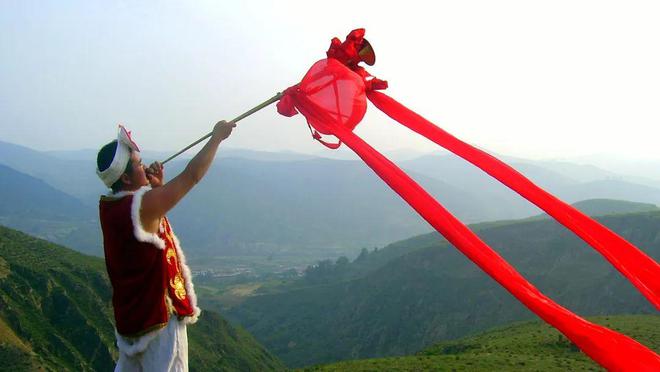
Zichang Suona National Intangible Cultural Heritage Project
Zichang City, Yan'an, Shaanxi Province is located in the middle of the Loess Plateau, with Hengshan District in the north, Zizhou County and Qingjian County in the east, Yanchuan County and Yan'an City in the south, Ansai District and Jingbian County in the west, and Yugongshi in Zichang. It belongs to the territory of Yongzhou, formerly known as Anding County. In the 31st year of the Republic of China (1942), it was renamed Zichang County in memory of the national hero Xie Zichang. In 2019, the State Council approved the withdrawal of the county into a city. The above military ranks are known as "Red Capital" and "General County".
The long years have accumulated profound cultural heritage. At present, there are 1 intangible cultural heritage project in Zichang City - 1 national level, 4 provincial level, 9 municipal level, 29 county level...

Zichang Suona
Protection unit: Zichang Cultural Center

The Zichang Suona has a bright tone, a deep bass, and a high-pitched, majestic sound. When lyrical, it is melodious and melodious, euphemistic and beautiful, like flowing clouds and flowing water; when it is festive, it is cheerful and bright, excited and excited, like thousands of horses jubilant; Every time there is a red event, the suona is used to welcome relatives and entertain guests, adding a festive and joyful festive atmosphere, and playing a role in cheering and adding to the fun. Whenever there are tragic events, suona is used to welcome relatives and friends, to accompany the spirit of sacrifice, and to lead the way in funerals, so as to set off an atmosphere of sadness and express grief for the deceased. A beautiful son-in-law suona made thousands of people overwhelmed. The suona has become Zi Changren's lifelong companion, which reflects the deep affection of Zi Changren for this piece of loess.
The Zichang Suona is generally 42 cm long and made of cypress wood. The trombone is the prelude, and the snare drum, gong, and cymbal are the accompaniment instruments. The traditional suona class consists of 5 people, called "Little Five Pieces" or "Old Five Pieces". Usually played by the upper and lower hands, the lower hand is attached to the upper hand to simplify the performance. Suona artists known as "drummers" basically follow the rules of slow start, middle continuation, and fast end. The main music is divided into two categories, sad and happy, with rich content, and more than 110 representative traditional songs include "The Big Door", "The Big Swing Team", "Victory and Return to Camp" and "Bitterling Ding".
Zichang Suona originated from the folks in northern Shaanxi and flourished in Zichang City, Shaanxi Province. The main features of the Zichang Suona are as follows: First, the stem is long and the bowl is large, with a wide sound range and beautiful timbre, which can form a sharp contrast between the sound range, timbre and volume. Its music is high-pitched, vigorous and deep, and the music played is comfortable and expressive, with expressive expressions, which is consistent with the atmosphere and natural environment of the Loess Plateau where it is located, and can achieve a high artistic hearing and atmosphere feeling. The second is that it is group-like and performative. Hundreds of people can play the same piece of music collectively, playing and dancing, neat and unified, magnificent and overwhelming. It is known as the traditional military band in northern Shaanxi. The third is that the trombone, as a characteristic instrument of the sub-long suona, can push the unison atmosphere to a climax. Fourth, when playing, the cheeks can be ventilated, and it can be played continuously, with strong durability, and can reach the state of being as graceful as flowing clouds and fascinating. Fifth, there are many kinds of suona tunes, which not only retain traditional tunes, but also transplant folk songs, minor tunes, dramas, and religious music.
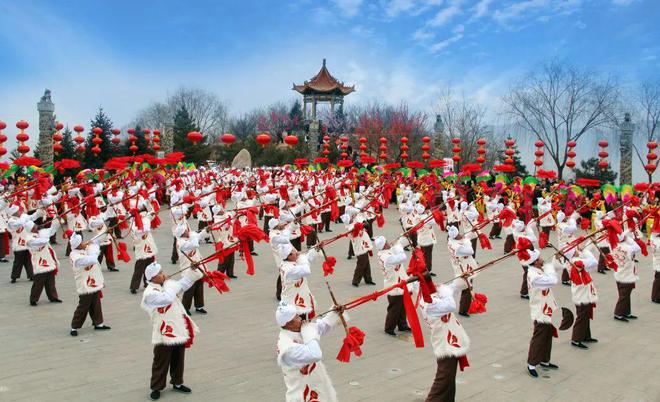
Zichang Suona has been invited to shoot more than 100 film and television dramas, and has traveled to the United Kingdom and Russia to participate in military music festival performances. CCTV "Booming New Year's Eve" walked into Zichang and broadcasted the grand and festive scene of Zichang's suona celebrating the New Year live to the world. Zichang Suona has also won the "Shanhua Award", the highest award of Chinese folk literature and art, and the first prize of the 2nd National Suona Exhibition. Zichang City was successively named "Hometown of Chinese Folk Culture and Art" by the Ministry of Culture and Tourism, and "Hometown of Folk Culture and Art" and "Hometown of Suona" by Shaanxi Provincial Department of Culture and Tourism.
Jiao Yangliang: provincial representative inheritor
Born in 1956, a native of Lijiachuan, Siwan Town, Zichang City. Under the tutelage of Mr. An Shengrong, a famous local artist. Organized and published "The Collection of Traditional Suona Songs in Northern Shaanxi", released the cassette tape of "Festival of Suona Songs in Northern Shaanxi", appeared on CCTV 9 times, and arranged suona music for more than 10 movies and TV series such as "Beidou" and "Suona Welcome". , won the honorary title of "China Singing King", and played an important role in the promotion, sorting and research, inheritance and protection of Zichang Suona.
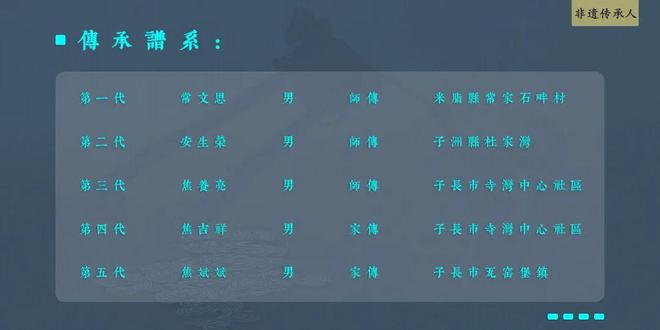
Li Shulin: the representative inheritor at the municipal level
Born in 1954, a native of Majiabian Town, Zichang City. At the age of 5, he learned suona playing skills, traditional suona music, folk songs, and minor tunes from his fourth uncle, Li Chenglu. At the age of 14, he began to practice art and worshipped Shen Zhulin as a teacher. He was a famous suona drummer for dozens of miles in Fangyuan. blow". In 1984, he participated in the regional performance and won the first prize of the individual. He participated in the Shaanxi highway system performance and won the group special award and individual excellence award. In 1992, he participated in the National Suona Invitational Competition and won the third prize. "Shanhua Award", won the first prize in thousands of rural cultural performances in 100 counties in Shaanxi Province. He has participated in many performances on CCTV, and has been invited to participate in the shooting of many film and television dramas such as "Battle of Yangmahe", "Beidou", "Tinder", "Liu Zhidan and Xie Zichang", and "Childhood Memories".
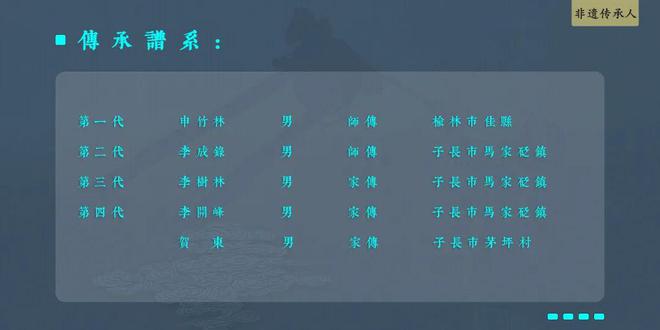
Zhao Zhihai: the representative inheritor at the municipal level
Born in 1970, a native of Yujiaping Town, Zichang City, he has been taught by Chang Tiying since he was 9 years old. Since he was 20 years old, he has set up a music class on his own, actively guides his disciples, and teaches suona playing skills. He has participated in many large-scale cultural exhibitions in foreign countries and provinces for many times.
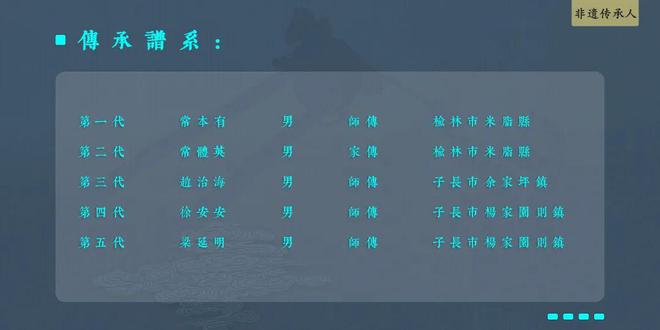
Suona sound, sound suona.
In the poor and fertile land of Yan'an, the intoxicating sounds of nature have long permeated the fields and entertainment of the people, becoming their spiritual support and favorite.
- Zichang Suona
It is understood that in order to promote the protection and inheritance of intangible cultural heritage, Zichang Municipal Bureau of Culture and Tourism is actively committed to the protection, excavation and inheritance of intangible cultural heritage, and has successively carried out intangible cultural heritage investigations, intangible cultural heritage training, and intangible cultural heritage into the campus. , into the community and other series of activities, so that the intangible cultural heritage of Zichang can be inherited and developed in the process of development. At present, Zichang City has established 10 cultural associations and 8 Daoqing drama troupes, including suona, yangko, Daoqing, folk art, and folk art. As of May 2022, the intangible cultural heritage projects declared by Zichang City for storage include:

Intangible cultural heritage of the people
people share
Through the protection and inheritance of intangible cultural heritage, the common people have a more sense of participation, gain, and happiness, which in turn generates a sense of identity, and obtains self-confidence and happiness that cannot be replaced by other things.
 渝公网安备 50010702504639号
渝公网安备 50010702504639号